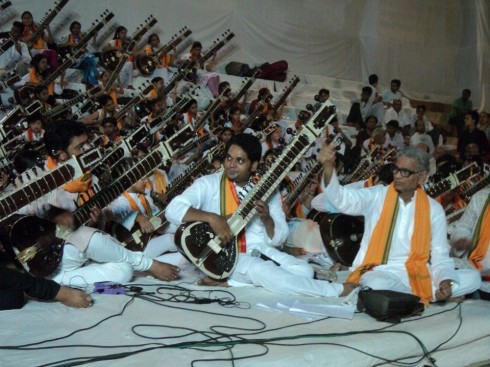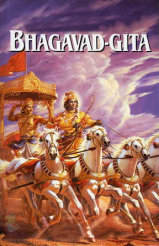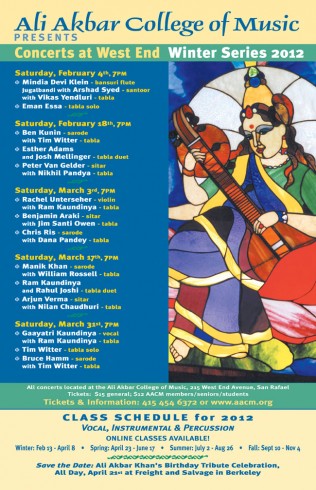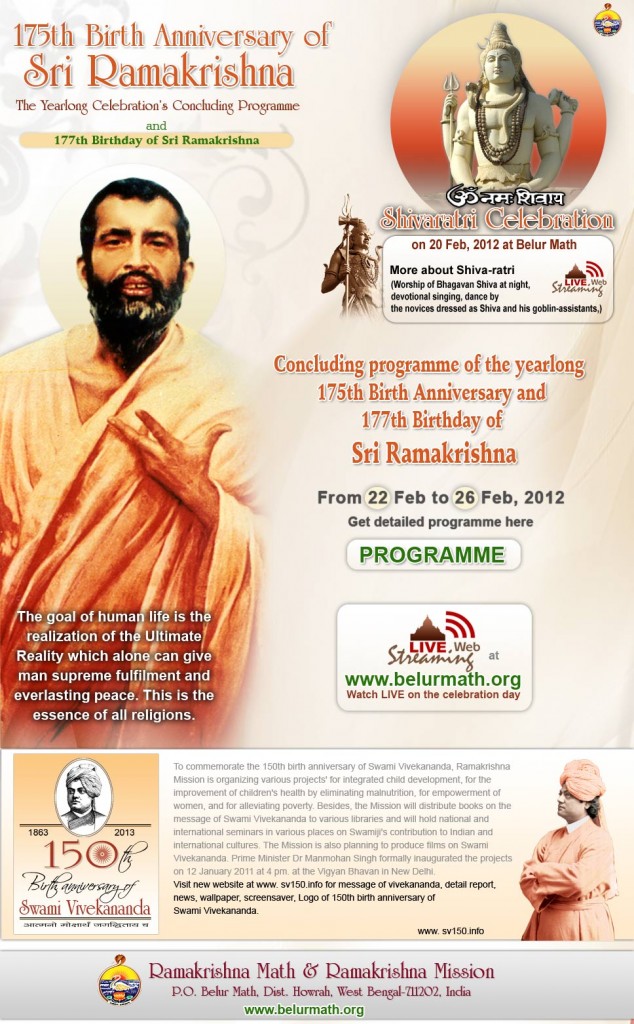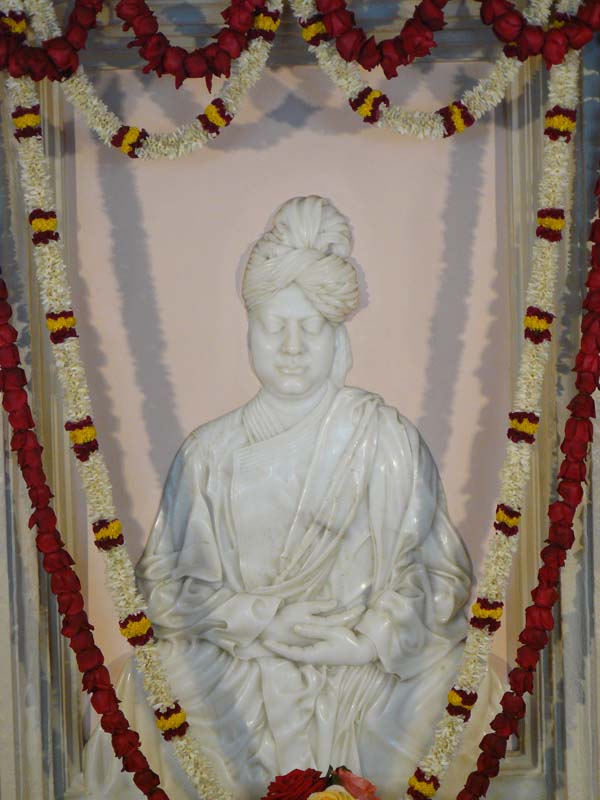Indische Götterwelten
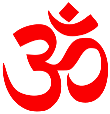
Mishras 2012 Europen Musical tour
Dear Friends,
We are in Varanasi now and wish all of you. We are happy to inform you that our tour for Europe this year will be in October/ November 2012. So we are starting now for booking the Concert dates of Europe and just like to inform you that if you want to book any concert of us then please contact us soon as now we are booking the dates.
We are coming three musician Pandit Shivnath Mishra, myself Deobrat Mishra on Sitar and Prashant Mishra on Tabla. So please contact us soon for any information you need.
Hope to hear from you soon.
Yours, Deobrat Mishra
Sitar Artist.
Contact us at: mishramusic@hotmail.com
Website: www.music-of-benares.com
Cell: 0091-9451586700
Note: we are also sending you a attachment of recent concert photos and Video Link on youtube we did with 108 Sitar players in Varanasi to save holy River Ganges. Please have a look. You can see more picture of it on my facebook account: Deobrat Mishra
My father Pandit. Shivnath Mishra made a history in Varanasi-India to conduct a orchestra of 108 sitar players. Total musician where 151 including Tabla players and Flute players.
Varanasi (Sanskrit: वाराणसी ) is a city situated on the banks of the River Ganges in the Indian state of Uttar Pradesh, 320 kilometres (199 mi) southeast of state capital Lucknow. It is regarded as a holy city by Buddhists and Jains, and is the holiest place in the world in Hinduism (and center of earth in Hindu Cosmology). It is one of the oldest continuously inhabited cities in the world and probably the oldest of India. The Kashi Naresh (Maharaja of Kashi) is the chief cultural patron of Varanasi and an essential part of all religious celebrations.The culture of Varanasi is closely associated with the River Ganges and the river’s religious importance. The city has been a cultural and religious centre in North India for several thousand years.
The Benares Gharana form of Indian classical music developed in Varanasi, and many prominent Indian philosophers, poets, writers, and musicians resided or reside in Varanasi, including Kabir, Ravidas Their Guru Swami Ramanand, Trailanga Swami, Munshi Premchand, Jaishankar Prasad, Acharya Shukla, Ravi Shankar, Girija Devi, Hariprasad Chaurasia, and Bismillah Khan. Tulsidas wrote Ramacharitamanas here, and Gautama Buddha gave his first sermon at Sarnath located near Varanasi (Kashi). Varanasi is home to four universities: Banaras Hindu University, Mahatma Gandhi Kashi Vidyapeeth, Central Institute of Higher Tibetan Studies and Sampurnanand Sanskrit University. Residents mainly speak Hindi and Kashika Bhojpuri, which is closely related to the Hindi language. People often refer to Varanasi as “the city of temples”, “the holy city of India”, “the religious capital of India”, “the city of lights”, and “the city of learning.”
Mishras Press release:
Very rare to see three generation master musician’s on same stage.
11th GENERATION FATHER AND SON SITAR MASTERS of Benares Gharana
From their home city of Benares, an ancient spiritual centre of traditional music and Indian culture, “The Mishras” are bringing classical North Indian Ragas and meditative music to the world audience, gifting the audience with a fabulous performance and a spiritual experience. Join this father and son duet of two of the worlds finest Sitar Artist and Prashant Mishra on Tabla grandson of Pandit Shivnath Mishra as they inspire one another to new levels of loving interplay.
PANDIT SHIVNATH MISHRA
Pandit Shivnath Mishra was born on the 12th of October 1943, in Varanasi (North India). Also known as “Legend of the Sitar”, he is the 10th generation of the prominent Benares Gharana lineage of top class singers including Pandit Bade Ramdas Mishra and Panditji Great Grand Father. Since childhood, his highly musical family could see signs of a masterful musician in him. When Panditji was five years old, he began studying vocal music with his father, Badri Prashad Mishra, and his uncle-guru, Pandit Mahadev Prashad Mishra. However, when he was eight his musical inclination led him to study the sitar. In a family of great classical Indian vocalists, he was the first one who mastered the sitar.
Due to the vocal influence from his family as well as the Benares Gharana tradition, he is one among few artists in Contemporary India who ‘sing inside’ while playing a musical instrument. His lively, powerful and unique style has praised him with innumerous titles by the most representative authorities and institutions of music in and outside India. In 1966, when he was only twenty-three, he received a gold medal in the All India Music Conference, in Calcutta.
1979 marks the beginning of his performances abroad. Sine then, he has been constantly on tour in many foreign countries, among them Germany, Italy, France, Luxembourg, Switzerland, Austria, Japan, Holland etc. In 1999, he gave his first concert in the USA and Canada. During his tours, he has performed with several international jazz artists such as John Handy, Paul Horn, David Freezen, Ben Conrad, Berred Kworrase, George Figgler Aimester among others. Moreover, he participated in many conferences and recitals including the Condolence Metal of Late Prime Minister Mrs. Indira Gandhi, in Germany. He also took part in programs broadcast by the BBC Television and the German Radio.
Being one of India’s premiere sitar artists of all times, Pandit Shivnath Mishra was the Head of the Music Department at the Sampurnanand Sanskrit University of Benares, in Varanasi, for 36 years. At this time, in 1994, he formed the “Music of Benares” which consists of a group of North Indian (Hindustani) classical musicians whose aim is to familiarize audiences all over the world with Hindustani music in general and the Benares Gharana in particular. What is characteristic of the Benares Gharana is exactly the singing of the Thumri, a light Indian classical music that is highly ornamental and thus very emotional and expressive. At a time when many different Gharanas mix with each other, the “Music of Benares” group keeps this ancient tradition alive.
Incorporation of this style with the “Jugalbandi” presentation, in which there are two solo artists sharing the stage, has created a unique synthesis of classical and folk that appeals to audiences everywhere. But this is not just Jugalbandi, this is a duet between a Guru and his Shishya (disciple) and, in this case, between father and son. Seeing this special interaction on stage is no doubt an unforgettable and mesmerizing experience.
Deobrat Mishra – biography
Deobrat Mishra is no doubt one of the most energetic and innovative sitar artists of India. Selectivity, melody and rhythmic complexity are typical features in his lively playing style.
Born in 1976, he represents the 11th generation of the Benares Gharana tradition. As a young child he studied tabla with his mother, Pramila Mishra, who is the granddaughter of the well-known tabla player Pandit Baiju Mishra. He started by studying vocal music with his father at the age of five and began his sitar lessons a year later. That same year, after only six months of studying the sitar, he gave his first public performance on stage. Five years later, he performed for the first time on the All India Radio.
Since 1994 he has been touring throughout Europe with his father. In the same year he was chosen to receive the award of the best young sitar player of India. In 2000 he received the “Jewels of Sound Award” in Mumbai. His many projects include music workshops, solo performances for radio and television as well as world music programs with Indian and European artists. Moreover, he is the one in charge of cultural events and music lessons provided by the Academy of Indian Classical Music, the school he founded along with his father, Pandit Shivnath Mishra, in 2006.
Recently, he received a Masters degree in sitar from the Prayag Sangit Samiti in Allahabad. Among many other projects, the Mishras performed and recorded their music with the Western Symphony Orchestra of Italy in 2005. Nowadays, they fully dedicate their art to similar projects including annual tours around the world.
Above all, the Mishras (father and son) serve as two of India’s leading cultural ambassadors of our times
Prashant Mishra is one of the best young Tabla player of benares music tradition. When he was five he started to learn tabla with the family member of Biru Mishra of Varanasi also studying Tabla presently with Mr.Chakkan lal Mishra(Student of Great Tabla player Anokhelal Mishra..
Soon after few years of hard practice with his grandfather Pandit Shivanath mishra and uncle Deobrat mishra he was able to perform with Mishras His skills beautifully compliment and support the Mishras in their concerts.
http://timesofindia.indiatimes.com/topic/Aviral-and-nirmal-flow-of-the-Ganga/news
In 2004 he won first prize in Tabla competition organized by Sangeet Natak Academy Uttar Pradesh India. He received many awards for his tabla playing at many different places. The Mishras tour will help to support the Academy Of Indian Classical Music School in Varanasi, India.
Additionally, the Mishras support their Academy of Music in Benares, India where they keep alive the tradition of their music amongst young musicians. Every January and February, the Academy is open to international students of all ages and skill levels. These study tours to India are a cultural experience combining ashram style living and intensive music instruction in one of the world’s oldest cities.
Visit: www.benaresmusicacademy.co
For more information, contact Deobrat Mishra: mishramusic@hotmail.com
Visit our website: www.music-of-benares.com
http://www.gangaaction.com/
http://
http://
#Previous #articles #videos #benares #gharana
#Previous #articles #save #ganga #water #humanrights
Note: Mishra or Misra (Hindi: „मिश्र“ „मिश्रा“) is a Hindu Brahmin surname found mostly in the northern and central parts of India. It is one of the most widespread Brahmin surnames in the fertile Gangetic plain region and in the Indian states of Delhi, Bihar, Uttar Pradesh, Uttarakhand, Madhya Pradesh, Rajasthan, Orissa, Assam and West Bengal. It is also found in countries such as Guyana and Trinidad and Tobago under the anglicized version of Misir, due to migration owing to agricultural/plantation employment. The surname is also found in Nepal, Fiji and Mauritius, as well as in other Indian diaspora communities.
In Hinduism, Brahmin refers to the class of educators and preachers. It is the highest class in the caste system. There are many references in the Ramayana and Mahabharata about the importance of a Brahmin. In the Vedic period, the Brahmins preferred isolation and solely dedicated their life to propagating knowledge and Dharma. However Misras have historically been martial Brahmins and in earlier years, many were drafted into the army.

Themenabende im Monat Mai / Juni mit Shri Sarvabhavana
Wir laden herzlich ein zu den Vorträgen und Veranstaltungen mit Shri Sarvabhavana im Monat Mai/ Juni VORTRÄGE in BERLIN / DRESDEN & PIRNA
The Bhagavad Gita (pronounced: [ˈbʱəɡəʋəd̪ ɡiːˈt̪aː] (![]() listen)), also referred to as Gita, is a 700-verse Hindu scripture that is part of the ancient Sanskrit epic Mahabharata. Due to its presence in the epic, it is classified as a Smṛiti text. However, those branches of Hinduism that give it the status of an Upanishad also consider it a Śruti or „revealed text“.[1][2] As it is taken to represent a summary of the Upanishadic teachings, it is also called „the Upanishad of the Upanishads.“[3] HERE
listen)), also referred to as Gita, is a 700-verse Hindu scripture that is part of the ancient Sanskrit epic Mahabharata. Due to its presence in the epic, it is classified as a Smṛiti text. However, those branches of Hinduism that give it the status of an Upanishad also consider it a Śruti or „revealed text“.[1][2] As it is taken to represent a summary of the Upanishadic teachings, it is also called „the Upanishad of the Upanishads.“[3] HERE
Free Will…now in english! http://www.vedic-guide.de/en/texte/freier-wille
http://www.facebook.com/shrisarvabhavana
DON’T MISS THE LAST CONCERT OR KHANSAHIB’S ANNUAL BIRTHDAY TRIBUTE!!
Dear Students and Friends,
We’ve reached the end of the Winter Series! The final concert will begin at 7 p.m. on Saturday, March 31st, and will feature a vocal performance by Gaayatri Kaundinya with Ram Kaundinya on tabla, followed by Tim Witter in a tabla solo, and will conclude with Bruce Hamm on sarode with Tim Witter accompanying on tabla.
We appreciate all the wonderful support we’ve recieved throughout the Series, and look forward to seeing you all at this final performance!
For more information, click here!
It is an incredibly special time of year for us, as we are preparing our annual tribute to celebrate Khansahib’s birthday. This event is such an honor to organize, and we are very excited to be able to hold it once again at the new Freight & Salvage location.
We are delighted to present this year’s lineup of talented artists to the public, and are hoping to surpass the wonderful turnout we had last year.
The day’s events will begin with a series of free performances. The first will be a group of young, extremely talented vocal students of Anuradha Sridhar, from her Trinity Center for Music.
Following this will be the AACM Instrumental Ensemble, who gave a memorable performance at last year’s Tribute. With Arjun Verma and Ben Araki on sitar, Mallar Bhattacharya and Manik Khan on sarode, and Jim Santi Owen on tabla, the Ensemble has a tremendous, lively sound.
The final performance for the afternoon portion of the day will be with the versatile and accomplished sitarist, Anupama Bhagwat, accompanied by Indranil Mallick on tabla.
In the evening, we will have the pleasure of showcasing Aruna Narayan, one of Indian classical music’s only performing female sarangi players, and daughter of the great Ram Narayan. Satish Tare will be accompanying her on tabla.
The evening will close with Khansahib’s son, Alam Khan, performing a solo on sarode with our Director of Percussion, and world renowned tabla master, Swapan Chaudhuri.
We are so grateful and happy to have all of these amazing artists come together in commemorating Khansahib’s life, and we look forward to having you join us in our celebration!
___________________________________________________________
Become a member of the AACM http://www.aacm.org today! Thank you to our current members for your continued support.

Sivaratri Celebration and Sri Ramakrishna’s Brithday Celebration :
Sri Ramakrishna’s 175th Birth Anniversary : The Yearlong Celebration’s Concluding Programme and Sri Ramakrishna’s 177th Birthday Celebration : Watch LIVE from 22. Feb to 26. Feb 2012
Maha Shivratri ( Sanskrit:महा शिवरात्रि, Tamil:மகா சிவராத்திரி, Hindi:महाशिवरात्रि Nepali: महाशिवरात्रि) or Maha Sivaratri or Shivaratri or Sivarathri (Great Night of Shiva or Night of Shiva) is a Hindu festival celebrated every year on the 13th night/14th day in the Krishna Paksha (waning moon) of the month of Maagha (as per Shalivahana or Gujarati Vikrama) or Phalguna (as per Vikrama) in the Hindu Calendar (that is, the night before and day of the new moon). The festival is principally celebrated by offerings of Bael (Bilva) leaves to the Lord Shiva, all day fasting and an all night long vigil. Per scriptural and discipleship traditions, the penances are performed in order to gain boons in the practice of Yoga and meditation, in order to reach life’s summum bonum steadily and swiftly. International Mandi Shivratri Fair is held every year.
Shiva-ratri (Magha-krishna-chaturdashi) :
Shiva-ratri is observed on the 14th lunar day of the dark fortnight of the month of Magha (February-March). Watch LIVE Feb. 20. 2012 http://www.belurmath.org/siva_ratri.htm
Mahashivaratri is on February 19th in Entire North America, Canada, and United Kingdom. For Middle East, India, Srilanka, Malaysia, China, Japan, Singapore, Australia, Newzeland and Fiji Mahashivaratri is on Feburary 20th 2012. Please remember there is no Chaturdashi during 20th February’s midnight in America, Canada and United Kingdom. Hence If you are observing Mahashivaratri on February 20th in America, Canada, and United Kingdom you are observing amavasya not mahashivaratri. However in Middle East, India, Srilanka, Malaysia, China, Japan, Singapore, Australia, Newzeland and Fiji Mahashivaratri is on Feburary 20th 2012.
http://www.belurmath.org/siva_ratri.htm
http://en.wikipedia.org/wiki/Sivarathri
Hindu Festivals 2012 Time Table:
http://www.mypanchang.com/hindufestivals2012.php
SWAMI VIVEKANANDA’S BIRTHDAY CELEBRATION : Live Webcast
http://www.belurmath.org/news_archives/swami-vivekanandas-birthday-celebration-live-webcast/
http://www.belurmath.org/news_archives/2012/01/10/national-youth-day-12-january-2/
Previous #articles #videos # development #reliefwork
http://ramakrishna.org Ramakrishna – Vivekananda Center of New York
http://en.wikipedia.org/wiki/Vedanta
Mountain Minorities and Indigenous Peoples

NGO Development Projects Active in Tibet
About ICIMOD – The International Centre for Integrated Mountain Development, ICIMOD, is a regional knowledge development and learning centre serving the eight regional member countries of the Hindu Kush-Himalayas – Afghanistan, Bangladesh, Bhutan, China, India, Myanmar, Nepal, and Pakistan – and based in Kathmandu, Nepal.
Globalisation and climate change have an increasing influence on the stability of fragile mountain ecosystems and the livelihoods of mountain people. ICIMOD aims to assist mountain people to understand these changes, adapt to them, and make the most of new opportunities, while addressing upstream-downstream issues. We support regional transboundary programmes through partnership with regional partner institutions, facilitate the exchange of experience, and serve as a regional knowledge hub. We strengthen networking among regional and global centres of excellence. Overall, we are working to develop an economically and environmentally sound mountain ecosystem to improve the living standards of mountain populations and to sustain vital ecosystem services for the billions of people living downstream – now, and for the future.
International Mountain Day, celebrated on December 11, gives us an opportunity to reflect on the relevance of mountains for the world. This year the International Mountain Day theme focuses on indigenous peoples and other minorities living in the mountains. The purpose is both to highlight the threats and challenges faced by these communities, and to acknowledge the invaluable knowledge they have and the contributions they can make towards overcoming global challenges of poverty and loss of diversity in a rapidly changing world.
A majority of the world’s indigenous women and men live in mountain regions, many on the margins of society and facing poverty and exclusion. The Hindu Kush-Himalayan region has some of the highest diversity of indigenous peoples and other minorities in the world. An ICIMOD report identified more than 600 living languages in the Himalayas, 400 spoken by less than 100,000 people. According to current forecasts, ninety per cent of all languages could disappear within 100 years. The loss of these languages not only erodes an essential component of a group’s identity, it is also a loss to heritage for all humankind.
The UN General Assembly adopted the UN Declaration on the Rights of Indigenous Peoples in September 2007, marking an important step in international efforts to preserve the identity of indigenous peoples. However, implementation has a different speed and different levels of commitment in different countries.
In agricultural terms, mountains are often considered ‘marginal lands’, unsuitable for modern commercial farming which focuses on cultivation of single crop varieties for large markets. Indigenous mountain people and other mountain communities continue to use traditional practices and techniques including sophisticated terracing systems, water transportation and irrigation schemes, and a combination of pasture, forestry and farming practices. Indigenous women and men serve as custodians of this traditional knowledge on how to farm under difficult mountain conditions, and how to conserve important reservoirs of agricultural biodiversity.
They sustainably farm a wide variety of crops that are adapted to a range of different elevations, slope conditions, and micro-climates, and this knowledge will be of great, if as yet little noticed, value in the world’s efforts to adapt to climate and other drivers of change. The autonomous adaptation practiced by mountain communities consists of community-based interventions that address underlying causes of vulnerability and reduce the risk of possible adverse impacts of climate change by building upon the existing rich indigenous knowledge base on adaptation to environmental change and helping to strengthen the resilience of the communities. Women especially play a critical role in gendered indigenous knowledge. Their roles and expertise have yet to be acknowledged, but has great potential for adapting to multiple drivers of change.
Indigenous mountain communities are connected to the land, the environment, and natural resources in ways that are often inextricably intertwined and therefore expressed in spiritual and socio-cultural terms. Respecting this worldview, and preserving the languages, music, artwork, folk tales, culture, meanings, and myths that express it, is critical for the survival of indigenous communities in mountain areas. This ‘intangible heritage’ also enriches the global community, providing inspiration and insights for realising a more sustainable relationship between humankind and the environment.
A scene from Tibetan Documentary „Leaving Fear Behind,“ shows a nomad school in Tibet (Amdo) working to preserve Tibetan Language and culture as it’s very existence is under threat from Chinese Government policies. Find out more: http://studentsforafreetibet.org Leaving Fear Behind: The Film the Chinese Government Doesn’t Want the World to See. // sumit sadhak practicing handstand in himalyas on the bank of ganga river one of the most important places for yogis.
The involvement of indigenous mountain communities is an important prerequisite for sustainable mountain development. Therefore, as governments work toward addressing mountain development priorities, it is critical that they live up to their commitments outlined in the UN Declaration on the Rights of Indigenous Peoples.
We hope that this year’s International Mountain Day will help to increase awareness of the central role of Minorities and Indigenous Peoples for mountain development, and to motivate all citizens, policy makers, and development actors to recognise the importance of their contribution to sustainable development. We trust that the Day will encourage organisations to invite indigenous and traditional mountain communities to participate actively in national and international efforts to understand and adapt to the multiple drivers of change, including climate change, in the mountains of the world.
With best wishes, Andreas Schild http://www.icimod.org
Culture and Development – Placing culture at the heart of development policy constitutes an essential investment in the world’s future and a pre-condition to successful globalization processes that take into account the principles of cultural diversity. It is UNESCO’s mission to remind all States of this major issue.
As demonstrated by the failure of certain projects underway since the 1970s, development is not synonymous with economic growth alone. It is a means to achieve a more satisfactory intellectual, emotional, moral and spiritual existence. As such, development is inseparable from culture. Strengthening the contribution of culture to sustainable development is a goal that was launched in connection with the World Decade for Cultural Development (1988-1998). Ever since, progress has been made thanks to a corpus of standard-setting instruments and demonstration tools such as cultural statistics, inventories, regional and national mapping of cultural resources.
In this regard, the major challenge is to convince political decision-makers and local, national and international social actors to integrating the principles of cultural diversity and the values of cultural pluralism into all public policies, mechanisms and practices, particularly through public/private partnerships.
This strategy will aim, on the one hand, at incorporating culture into all development policies, be they related to education, science, communication, health, environment or tourism and, on the other hand, at supporting the development of the cultural sector through creative industries. By contributing in this way to poverty alleviation, culture offers important benefits in terms of social cohesion. Read more: http://portal.unesco.org/culture/en
The Challenge of Human Rights and Cultural Diversity – United Nations Background Note by Diana Ayton-Shenker:
The end of the cold war has created a series of tentative attempts to define „a new world order“. So far, the only certainty is that the international community has entered a period of tremendous global transition that, at least for the time being, has created more social problems than solutions.
The end of super-power rivalry, and the growing North/South disparity in wealth and access to resources, coincide with an alarming increase in violence, poverty and unemployment, homelessness, displaced persons and the erosion of environmental stability. The world has also witnessed one of the most severe global economic recessions since the Great Depression of the 1930s.
At the same time, previously isolated peoples are being brought together voluntarily and involuntarily by the increasing integration of markets, the emergence of new regional political alliances, and remarkable advances in telecommunications, biotechnology and transportation that have prompted unprecedented demographic shifts.
The resulting confluence of peoples and cultures is an increasingly global, multicultural world brimming with tension, confusion and conflict in the process of its adjustment to pluralism. There is an understandable urge to return to old conventions, traditional cultures, fundamental values, and the familiar, seemingly secure, sense of one’s identity. Without a secure sense of identity amidst the turmoil of transition, people may resort to isolationism, ethnocentricism and intolerance.
This climate of change and acute vulnerability raises new challenges to our ongoing pursuit of universal human rights. How can human rights be reconciled with the clash of cultures that has come to characterize our time? Cultural background is one of the primary sources of identity. It is the source for a great deal of self-definition, expression, and sense of group belonging. As cultures interact and intermix, cultural identities change. This process can be enriching, but disorienting. The current insecurity of cultural identity reflects fundamental changes in how we define and express who we are today. Read More: * HERE*
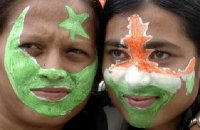
Siddha system of Indian medicine

http://agasthiaherbal.tripod.com
Bio Piracy – Commercialization_of_trad. medicines
http://healingfromtheroots.blogspot.com
The Siddha medicine is a form of south Indian Tamil traditional medicine and part of the trio Indian medicines – ayurveda, siddha and unani.This is nearly 10,000 years old medical system followed by the Tamil people, both in India and abroad. This system of medicine was popular in ancient India,due to the antiquity of this medical system,the siddha system of medicine is believed to be one of the oldest medical system. The system is believed to be developed by the 18 siddhas in the south called siddhar. They are the ancient supernatural spiritual saints of India and the Siddha system is believed to be handed over to the Siddhar by the Hindu God – Lord Shiva and Goddess Parvathi. So are the siddhars, the followers of Lord Shiva (Shaivaites). Siddhar’s total nos are eighteen, with agathiyar being the first Siddhar. Read More: > HERE <
Siddha system of medicine is one of the oldest medical systems of India existed separately in early times. The system has flourished well in India for many centuries. Although this system has declined in later years, in the wake of changing mode of life and modern medicine, it continues to sustain its influence on the masses because of its incomparable intrinsic merits. Siddha medicine can combat all types of diseases, especially the chronic diseases, which baffles and eludes even the modern sophisticated medicine.
There are two ancient systems of medicine in India, the Siddha which flourished in the south and the Ayurveda prevalent in north. Siddha system is called ‘saiva sampradayam’ (tradition of Lord Shiva) and Ayurveda is called Brahma or ‘Arsha sampradayam’ (the tradition of rishis). The inference to be drawn from these traditions is that, there is no exact point of time to which the beginning of these systems could be traced. They are eternal, without a beginning or end: they began with man and may end with him. The term ‘Siddha’ means ‘everlasting’, ‘Conquering death’, ‘holy immortals’, etc. This system is originated by 18 Siddhars headed by Siddha ‘AGASTHYA’. Siddhars were a Class of popular writers in Tamil in all branches of knowledge and many of their works were written in what is called High Tamil. They were men of high culture, intellectual and spiritual faculties combined with supernatural powers and intuitive intelligence acquired by yogic powers. The prevention and the cure of illness is the basic aims of all systems of medicine.
The Siddha system has, in addition, a transcendental motivation, a concern for what might be called the ‘IMMORTALITY OF THE BODY’. The ‘Siddhars’ were those who had renounced the world after experiencing its instability and uncertainties. They practiced yoga extensively and wrought great miracles, imbued with Devine power. They knew the past, the present and the future, rejuvenated their body, lived for many years, ultimately attained the state of ‘perpetual consciousness’ or ‘Samadhi’ and enjoyed eternal bliss. Big Hindu Temples sprang up over their Samadhi and centers of devout worship even today. They form the most important temples in south India.
Fundamental principles of Siddha – According to siddhars ‘Nature is man and man is nature’, therefore both are essentially one. The universe consists of two essential entities, matter and energy which the Siddhars call ‘Siva’ and ‘Shakthi’. The two co-exist and are inseparable.
The universe consists of five elements and these elements should not be confused with the elements of modern chemistry. They are primordial elements. They are Munn (solid), Neer (fluid), Thee (radiance), Vayu (gas), and Akasam (ether). All created and evolved matter in the world, be it animal, vegetable, or mineral, falls under these categories. The human anatomy and physiology, the causative factor of disease, the materials for the treatment and cure of diseases, the food for the sustenance of the body, all fall within the five elemental categories. This is the working hypothesis.
The human being is made up of the five elements. The various tissues of the body are the combinations of these elements. In one tissue one element may be more predominant than the others. The physiological function in the body is mediated by three substances- Vatham, Pitham, and Kapham. In each cell in the body these three co-exist and function harmoniously. Vatham is formed by the basic elements Akasam and vayu. Pitham is formed by Thee and Kaph is formed by Munn and Neer. If these three functions normally, health is maintained. The body consists of seven ‘dhatus’: Rasa (lymph), Kurudi (blood), Tasai (muscle), Kozhuppu (fat), Elumbu (bone), Majja (marrow) and Sukkilam and Artavam (male and female hormones). In these seven tissues one or other of the three ‘doshas’ predominate. In the tissue blood, Pitham predominates, in bone Vatham and in other tissues Kapham. The doshas should not be pictured as separate entities staying in the body in different places. Though they are treated separately, it is to be understood that they combine in their action to make life go on; they may be compared to three pillars which supports a structure. They conjointly permeate every structure in the body; so much so there is not a single point in the body where all the three doshas are not present. The maintenance of equilibrium of the three doshas is health; the disturbance of the equilibrium is disease. The concept is similar to the theories of cellular mechanism, biochemical changes, enzymes and hormones, of modern medicine- Both Siddha and Ayurveda are based on humoral pathological doctrine- the tridosha theory- the three supports of human body system.
Diagnosis and basis of treatment – The words ‘noai nadal, noai mudal nadal’ in the ancient texts denotes the approach to disease and determination of the etiology of the disease. Siddha concept for diagnosis is to investigate the cause of the disease, the signs and symptoms, complications if any, and pathological tissue changes. The Siddhars look at body and disease together to arrive at a conclusion regarding the condition or diagnosis of the case. This condition is an essential pre-requisite for treatment. In addition, eight important factors are to be ruled out. They are pulse, touch, tongue, colour, speech, eyes, faceus and urine. The five elements of the body and their life factors: the five elements of the body (pancha bhootas) and Vatham, Pitham, and Kapham (tridoshas) are widely described by Siddhars who classified the diseases into 4448 varieties. The etiology, signs and symptoms and treatment were explained for all the varieties by Siddhars. Medicines should be prepared according to individual needs separately.
The three ‘humors’ Vatha, Pitha and Kapha represents air, fire and water of the five elements (pancha bhootas), which form the connecting link between microcosm or man and macrocosm or the earth. These three humors maintain the human body through their combined functioning. The normal order of tridosha in a healthy person is 1: ½: ¼ or 4:2:1 respectively. If this equilibrium is disturbed disease sets in. Medicine are prescribed to set right the imbalance in the life factors either by addition, reduction or neutralization, since all matters (herbs, minerals and metals) contain the five elements and hence three factors. The presence of a particular factor in a substance is found by the taste of the latter. The five elements in different combinations form six tastes. Innumerable varieties of herbs are mentioned in Siddha literature. Many of these were described in a manner very difficult to understand. There are 64 types of medicine in Siddha pharmacopoeia, 32 for internal administration and 32 for external applications, besides 11 metals, 64 mercurial and non-mercurial), 120 uparasam (salts and other minerals). Diet and Anupanam (vehicle for administration) plays a very important role in Siddha treatment. A single herb like ’solanum trilobatum‘ is used in 20 different diseases with different Anupanams.
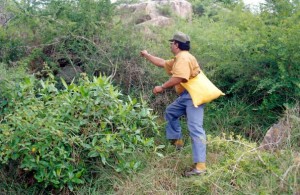
Unique Siddha medicinal preparations – For a medicine to be effective, the inorganic substances have to be brought to their atomic form. Siddhars developed the knowledge of bringing inorganic substances into atomic and ionic form which is easily absorbed by the system, when ground with herbal juices and put on the fire.
The specialized Siddha preparations are ‘parpam’, ‘chendooram’, ‘chunnam’, ‘mezhagu’. These are metallic and mineral preparations by transmutation processes of converting the metal to ashes and waxy constituency which exerts only therapeutic properties and devoid of any metallic traces. These are also the byproducts noticed during Siddhars Alchemical practices.
Muppu: Muppu has a distinct place in Siddha medicine. It is the combination of three rare salts which enhances the efficacy of any Siddha medicine. The preparation and ingredients are a closely guarded secret. It is also believed that ‘muppu’ also engender yogic concentration, a part of Siddha tradition.
Kaya kalpa: This is similar to ‘Rasayana chikitsa’ of Ayurveda and ‘gerontology’ of modern medicine. The word ‘kalpa’ means ‘able’, ‘competent’. When it is connected with ‘kaya’ or body, the term means competency or ability of the body. While in Ayurveda, rasayana is different from ‘vajeekarana’, kaya kalpa does not treat vajeekarana or the science of aphrodisiacs separately. When kayakalpa treatment is undertaken, the vigor of body and mind are restored and so there is no need for separate attention to vajeekarana. Siddhars were more concerned about the ultimate goal of living and less with worldly pursuit of sex. How ever, kayakalpa is very much capable of achieving the ends of both rasayana and vajeekarana.
Present status and scope: There are 6 Siddha medical colleges in Tamil nadu and one in Kerala catering to the needs of those who are interested in leaning siddha medicine course for 5 and half years and post-graduate specialization courses for two years.
Due to the popularity of ‘Siddha’ in India and abroad, the government of India has decided that Allopathic and Indian system of medicine should together contribute towards the development of the National Health Services. In addition, Indian system of medicine has also been recognized for the purpose of reimbursement of medical treatment under the central services.
The central council is executing its research programme in Siddha through Central research institute, regional research institute, mobile clinical research units, medico botanical survey unit etc. For the research in Siddha system, many research units were started at New Delhi, Bengalooru, Chennai, Pondycherry, Palayamkottai and Trivandrum.
“Food is medicine and medicine is food” and “Prevention is better than cure” were the slug lines of Siddhars and their followers. In the past people had the first hand information of the health and toxic effects of various species of flora and they provided the raw materials to the medical man for compilation. Thus Siddha system is a science perfected into an art, coupled with primitive intuitions into nature’s resources and secrets.
A close look at the eating habits of animals and birds reveals they eat food raw and ripe consisting of all the six tastes where as man eats only food stuff of four tastes, leaving bitter and astringent, which are pre-requisites for healthy circulation f blood. Bitterness fights against bacterial infection and astringency maintains the right blood quality and its constituents. Small quantities of agathi grandiflora, bitter gourd, seeds of solanum xanthocarpum, flowers of neem eaten now and then in small quantities, ward of many microbiological and bacterial infections.
It was a common knowledge for many Indian to possess the rare knowledge of various medicinal properties of ingredients in our culinary preparations and thus many an Indian woman trained in the traditional oriental ways of food preparation is an excellent and masterly physician without any master degree…
As a sampler, when excessive smoking causes dizziness, stomach disorders and makes the male suffer from nicotine poison, immediately the lady knows the sure cure for this disorder and gives him agathi grandiflora leaves, deliciously cooked at regular intervals and thus cures him of his malady, similarly she knows the properties of medicinal food recipes out of edible greens, leaves, barks, berries and other vegetables and the value of pepper, mustard, ginger and a host of other household provisions, rarely men of the past generations were perforce compelled to visit the medical experts and specialists who were scarce and few.
The leafy green mentioned above and several other bitter lasting foods and dishes as in margosa leaves and other plants and medicinal herbs, kill or exterminate the nematodes like thread worm, hookworm and tape worms and similar germs infesting the bowels and alimentary canal.
Religion is an indispensable stand in the web of Hindu Indian life that permeates through the daily life and character of Indians. The wise men of old India have deftly fused in their life certain ablutions, ceremonial rights and codes of conducts for normal healthy life. The Hindu Icons or the Pantheons of various Gods and particular modes of worship with leaves, flowers, milk, butter, honey, ghee, betel and nuts are symbolic and of great significance just as an abacus is used to induce children to learn arithmetic; these observations have been designed to promote for living a healthy life of body, mind and spirit. The practices may seem succinct or stupid to the modern civilization, but they were quite significant and sacred in the past.
The ancient wisdom of our ancestors should not be ridiculed because of our ignorance or non realization of their intrinsic worth. Let me present few examples of these rites and rituals and anyone with faithful, sincere interpretations of facts will come to the conclusion as how the medicine, art, culture, rituals and the way to healthy living with longevity were interwoven during prehistoric period.
While worshipping Lord Shiva, during the chanting and pooja, beal leaves (aegle marmelos) are offered to the Deity and after worship, some of these leaves are eaten by the devotees as ‘Prasad’ (blessings from God).this intake of beal leaves when followed regularly ensures good health by proper digestion and assimilation of food. It also removes the toxins in the body and is a blood purifier.
While worshipping mother Durga, the Goddess is being invoked with neem leaves and later consumed by the devotees. This is manna from heaven when consumed regularly in small quantities with its essence, as it proves wonderful disinfectant and germicide. Regular intake of this herb in any kind will be a sure elixir of life.
The foremost Hindu Deity Lord Ganesha, first to be propiated before commencing any important human project as per the belief. The Lord is worshipped with a particular type of grass – ‘Doorva’ (cynodon dactylon), which has been proven scientifically to possess the power of generating electricity in minute degree. When handling it augment one’s personal magnetism. It is of high medicinal value when administered orally. Another instance may seem superstitious but not without truth. Before initiating any auspicious rites, it is customary to make a crude image of Lord Ganesha with a fresh paste of either cow dung or turmeric paste and stick a small tuft of Doorva grass leaves to the person of the Deity. This image is abandoned and left to wither after performing pooja. Normally wet paste of either cow dung or turmeric when left exposed to atmosphere will be infested with bacteria and this does not happen with the sanctimonious Lord Ganesh’s image with the bunch of Doorva grass. It may baffle one’s imagination and one may not believe, but seeing believes!!!
Selection of purified herbs for compound Siddha preparations – Mango leaves are used in the worship of the Goddess of rivers- Ganga devi. Festoons of mango leave adorn temples and houses during festivals. A tuft of mango leaves dipped in the sacred water after worship Ganga is sprinkled over all the places of the premises and on the devotees. This serves as purificatory process. A decoction of mango leaves taken at regular intervals will cure many bodily illnesses.
The people of ‘Vishnu cult’ perform pooja of the Lord with ‘Tulsi leaves’ (ocimum sanctum). After the pooja 3-5 leaves are consumed as ‘Prasad’… these leaves consumed at regular intervals will build strong muscles and bones. It is also a wonderful prophylactic drug for many ailments.
Likewise ‘Lord Brahma’, the Creator is worshipped with country fig leaves and fruits. The intake of these leaves and fruits will restore the correct blood constituents due to its astringent properties. These few narrations give a glimpse into the astounding possibilities of simple herbal preparations with no intricate knowledge of orthodox Siddha compounds with elaborative preparation processes. With a primary knowledge of hundreds of species in vegetable kingdom and the knowledge of physical body, its physiology and anatomy and simple rules of health and hygiene, any layman can lead a healthy life free from diseases.
Similarly periodic oil-bath promotes real rejuvenation of the physical body, though the modern medical conception put it that the diet we take orally contain oily matter which could suffice for a healthy body. Folds and wrinkles disappear in due course, when taken regular oil bath, giving the person youth, glow and luster. There are many illustrations of Siddhars stating by proper physical exercise and perfect breathing, food habits, evacuation of bowels, many undesirable conditions get eliminated. Siddhars have also propounded many prescriptions for rejuvenating the body and this bulk is called ‘Kayakalpa’, literally meaning a body like stone. The most intriguing, perplexing and unique phenomenon of Siddha system of medicine is the ‘Kayakalpa group of herbs’ which is not found in any other systems of medicine in the world. These ensure physiotherapy, psychotherapy, preventive and curative aspects of diseases and pave the way for longevity. There are 108 kayakalpa herbs; many among them in daily use are onion, garlic, ginger, lemon, jequirity and turmeric etc.
On close scrutiny one will struck with much wonder as in how those days where there was not even a microscope, the ancient Siddhars were capable of describing the use of such things rich in vitamins, minerals, proteins, hormones, electrolytes and other nutrients grouped them as disease preventives for promoting longevity.
To conclude these scriptures and sciences embody all that was required for human advancements in the world and a study of these ancient literatures will be really productive of lasting benefits. We may confess that we are still ignorant of many things connected with the ancient thoughts and beliefs and it is our ignorance that belittles their greatness.
The revival of ancient systems, be they in medicine or moral code, requires a faithful interpretation of the views of the originators of these sciences and such a movement will be useful and indeed found necessary since modern discoveries still are incomplete and look forward to the ancient works for the ‘MISSING LINKS’.
The Siddha system of medicine deserves careful and faithful examination since it has in itself many principles which may go a long way to supply the defects and deficiencies of modern conceptions and that may save Indian society and generally the world from many a besetting peril…..
Exciting possibilities ahead: In conclusion, it must be said that Siddha medicine offers exciting avenues for investigations in the light of modern science and technology. Such investigations can lead to significant breakthroughs not just in herbal pharmaceuticals, but in conceptual and practical knowledge as well, with far-reaching benefits for the existing system of healthcare as a whole. But such investigative studies must necessarily be multidisciplinary, with full involvement of scholars in ancient Tamil scriptures, veteran Siddha Vaidyas, and tribal folks with knowledge of field work, historians and several other members of Siddha medical community at the local level. Exploration of the goldmine of Siddha knowledge and wisdom is certainly worth substantial investments of human and financial resources.
– Authored by Siddha vaidya P.S.Narasimha swamy,
Director- Agasthya Siddha literature research centre,
#1495, Dr. Ambedkar Road,
Krishna murthy puram, Mysore-5700 04 Cell: 09845167119
e-mail: swamy_siddha@yahoo.com , agasthyaswamy@gmail.com
Meet Narasimha Swamy (Agasthya Siddha), friends, fans at fb <
SRI VIDYA, Vidyas in Hinduism & Yoga Upanishads
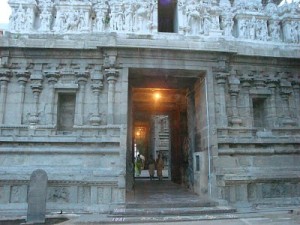
108 Upanishads | Vedanta Spiritual Library
Mess.166: A Holy Trip to Arunachaleshwara
http://taonews123.blogspot.com
ŚrÄ� VidyÄ� (also spelled „Shri Vidya“) is the name of a Hindu religious system devoted to the goddess LalitÄ� TripurasundarÄ� or simply TripurasundarÄ� (‚Beautiful Goddess of the Three Cities‘). According to British scholar Gavin Flood she is a tantric form of the goddess ŚrÄ� (also called LakṣmÄ�), consort of Vishnu. However, the late orthodox leader of the largest Samaya school of ŚrÄ� VidyÄ�, Sri Chandrasekharendra Saraswati Swamigal, says that the ŚrÄ� in ŚrÄ� VidyÄ� is a title of respect meaning The VidyÄ� and has no connotation to LakṣmÄ�. And Indian scholar V.R. Ramachandra Dikshitar states she is a form of Durga or Paravati, consort of Shiva , as well as several names from the LalitÄ� SahasranÄ�ma which call her the beloved of Shiva. The Sanskrit word vidyÄ� means „knowledge“ or „lore.“ A thousand names for this form of DevÄ� are recited in the LalitÄ� SahasranÄ�ma, which includes ŚrÄ� VidyÄ� concepts. Read More: > HERE <
The Sri Yantra (shown here in the three-dimensional projection known as Sri Meru Chakra or Maha Meru used mainly in rituals of the Srividya Shakta sects) is central to most Tantric forms of Shaktism.
Meru Chakras are frequently a central focus and ritual object for this worship of the Goddess. They are a more potent form of the Sri Yantra, since they are three-dimensional. Meru Chakras can be found in rock crystal and in metal, often a traditional panchaloha formula of silver, antimony, copper, zinc, and pewter, which enhances the flow and generation of Sri’s beneficial energies, covered in gold.
In the theology of the ŚrÄ� VidyÄ� the goddess is supreme, transcending the cosmos which is a manifestation of her. The school has an extensive literature of its own. The details of the beliefs vary in different texts, but the general principles are similar to those found in Kashmir Shaivism.
The goddess is worshipped in the form of a mystical diagram (Sanskrit: yantra) of nine intersecting triangles, called the śrÄ�cakra („Chakra of ŚrÄ�“) that is the central icon of the tradition.
SRI CHAKRA by S. SHANKARANARAYANAN – SRI CHAKRA, the king of chakras is a master plan of manifestation drawn by the divine Draughtsman on the board of the infinite, a transcript of the Transcendent, a symbol-image of the supernal verities. The spiritual and occult tradition of the worship of the Mother Goddess and the Sadhana of Srividhya are explained in sixteen chapters in terms of modern thought and understanding. Based on authentic and authoritative Tantric texts the exposition in English is inspiring and original, almost a classic in the field of esoteric literature.
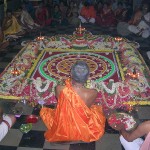
About the Author: Though his academic attainments are in Mathematics and his professional interests lie in a specialised field of industrial management, Sri S. Shankaranarayan has retained his first love for Sanskrit. In his childhood he was introduced to the ancient Sanskrit lore by his grandfather, Sri S. Narayana Iyer, who was himself a deep initiate in Sri Vidya, Later he came under the dynamic influence of Sri Kapali Sastriar. Shankaranarayanan cherishes a special regard for this tradition of the worship of the Divine Mother and his treatises on Devi Mahatmyam-both in Tamil and English have acquired an authenticity of their own. The present work on Sri Cakra, revealing as it does the depth of his scholarship, practical insight and occult knowledge, promises to be a classic on the subject. Endowed with luminous intellect, well-versed in the modes of esoteric worship and awake with an active spiritual aspiration, Shankaranarayanan is marked out to play a singular role in the resuscitation of the spiritual and occult tradition of India in terms of modern thought and understanding. -M. P. PANDIT
Buy the Book here: > www.exoticindiaart.com
- http://www.sriyantraresearch.com
- Ramana Maharshi – Sri Chakra Puja, every Friday <
- Meet International Vedanta Society, studies, friends at fb <
- Meet Kashmir Shaivism, friends and studies, at fb <
- Meet Shaktism „Doctrine of the Goddess“ at fb <
- Meet Hinduism, friends, fans, studies at fb <
- Meet Jivan Mukta, friends, studies at fb < (> Jivan Mukta <)
- Meet Prem Nirmal Holistic Counseling, studies, friends at fb <
- http://en.wikipedia.org/wiki/Flower_of_Life
RAM NAWAMI IN ‘INDIA’, Prof. Chitralekha Singh
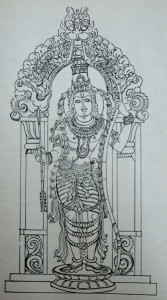
Rama (IAST: rÄ�ma, DevanÄ�garÄ�: राम; Lao: ພຣະຣາມ; Malay: Megat Seri Rama; Tagalog: Rajah Bantugan; Thai: พระราม) or Ramachandra रामचंद्र is the seventh avatar of Vishnu in Hinduism,and a legendary king of Ayodhya in ancient Indian mythology.
Rama is one of the many popular figures and deities in Hinduism, specifically Vaishnavism and Vaishnava religious scriptures in South and Southeast Asia.Most of the details of Rama’s life come from the Ramayana, one of the two great epics of India. Born as the eldest son of Kausalya and Dasharatha, king of Ayodhya, Rama is referred to within Hinduism as Maryada Purushottama, literally the Perfect Man or Lord of Self-Control or Lord of Virtue. Rama is the husband of Sita, whom Hindus consider to be an avatar of Lakshmi and the embodiment of perfect womanhood. Read More: > HERE <
Rama Navami (DevanÄ�garÄ�: राम नवमी) also known as Sri Rama Navami is a Hindu festival, celebrating the birth of Lord Rama to King Dasharatha and Queen Kausalya of Ayodhya. Rama is the 7th incarnation of the Dashavatara of Vishnu. The festival falls in the Shukla Paksha on the Navami, ninth day of the Chaitra month of Hindu calendar. Thus it is also known as Chaitra Masa Suklapaksha Navami, and marks the end of nine-day Chaitra-Navratri celebrations.
In the epic Ramayana, Dasharatha, the Emperor from Ayodhya, had three wives named Kausalya, Sumitra and Kaikeyi in the Treta Yuga, which follows the Satya Yuga and is succeeded by Dwapara Yuga. Their greatest worry was that they had no children, and so they had no heir to the throne in the Ikshvaku Kula or royal lineage of great, pious, wonderful Emperors. Rishi Vasistha suggests him to perform Puthra Kamesti Yagna, through which he can have a desired child.
Among the incarnations of the Supreme Being, that of Rama & Krishna are considered very significant for humanity as it was possible for human beings to relate to him in person. In the Ramavatar (Incarnation of Ram) hsis auspicious qualities were manifest and he set an example to mankind by his adherence to Dharma (Religion). Rama’s matchless prowess as a warrior and his valorus deeds have lent the name ‘Mahavira Vaibhav’. Kalyan Guna (Welfare to humanity) is the main evident of Lord Rama.
It was his Kalyan Guna that he condoned the faults in others even when they had caused harm to him. The most important instance was when Ravana stood helpless without arms in the battlefield it would have been very easy to finish him off if the feeling of revenge on the one who had abducted his wife and kept her under captivity had over ridden, his sence of Dharma in warfare. His propriety and his inborn trait of pardoning others faults came to the tore in this critical juncture. The other Quality which was singular in Rama was his easy accessibility to everyone because of his innate affability (Sausilya). He was not only the supreme being incarnate but also the prince-regent, heir to the emperor of the mighty kingdom of Ayodhya.
Rama endeared himself to one and all by his noble qualities during his exile in the forest, the manner in which Rama addressed Guha, touched by his service by declaring that he was indeed his brother. These are few examples of his holy and piousness.
In Ramayan 16 outstanding qualities of Lord Rama is referred as ‘Krishna’ he performed the very delecate task of proceedings as an envoy of the Pandava’s to explore whether peace could be ensured. In several ways he saved the Pandava’s.
Rama was a prince and as such he could not be assigned the job of an ambassador, however there was an occasion when he admired such a task by another and he felt sorry. He was denied a similar privilege and so in his next manifestation he himself volunteered to do this service. All Gods incarnation are identical in bringing out his concern for those who place their faith in him. Lord descended on the earth protect the pious and thereby revealed his easy accessibility the destruction of wicked men was also his concern but this could have been accomplished by his will.
‘Thyagraja’ the great writter has emphasised that Sri Rama is unique. He said that Rama is ‘Parabrahama’ he is his ‘Ishtadevta’ – He has written many songs in the praise of Lord Rama in ‘Harikambhojit Kirtana’ – He said “Rama is the one and only God. Oh Mind! why do you dissipate?” ‘He is Brahma, Siva, Indra, permanent and the antar yamin in all beings.’
„Hey Ram – Hey Ram“, is a great Devotional prayer sung in the praise of Hindus God Rama. A beautiful bhajan by Jagjit Singh. http://gita-blog.blogspot.com/
Rama is the character who is delighted and grateful even by one act of help by anyone and never entertains in his mind any hostility to one who has done him enormous harm.
Balmiki’s Ramayana is revered as the essence of the vedas itself and ‘Rama’ portrayed as the very passonification of dharma. The purpose of studying scriptured texts like ‘Ramayana’ is to the divine level. One can make his life sublime by a word of comfort to help another in distress. The script of Ramayana desist one from turning proud, when by divines grace one is placed is a high position or is intellectually superior. Ramayana is an epic of Moral values of human being, great source of in spiration to the whole of humanity. India as Ramayana’s birth place is well known and Ramayana has been part and parcel of the Indian way of life from time immemoriel.
Tulsidas has also witten’ Ram Charit Manas’ the history and the great story of ‘Rama’ as an epic which is very popular as it is described in a very simple manner to apporach to the heart of human being-.
Ramnawami is a great day when Rama was born in the Kingdom of Ayodhya King Dashratha & Kaushalya. Today her all incarnation a Shailputri, Brahmacharini, Chaudraghante, Kushmanda, Skandhamata, Katyayni, Kalratri, Mahagauri, Siddhidarti and on the last day on Nawami this year on 23rd March everybody celebrates the birthday of Sri Ram in all its gay mood wearing new clothes, meeting & greeting each other worshipping their Ishta Dev/Devi and congratulates each other.
Article by Prof. Chitralekha Singh
Dean: Institute of Visual, Performing Arts & Research, Mangalayatan University, Beswan, Aligarh.
Visit at: www.artistchitralekha.com
e-mail: chitralekha@artlover.com mob . 91 9319103482
- Ramayana or Ramkatha, NEWS on Festival of Ramkatha <
- Ramayana, Valmiki Ramayana, Adhyatma Ramayana, Tulasi Ramayana- Yogavasistha <
- VEDA, SMRITI, SRUTI on Dharma <
- MORARI BAPU – THE RAMAYANA EPIC POEM <
- Articles „DHARMA“ <
- http://en.wikipedia.org/wiki/Dharma –
- www.ramayoga.net
- Meet Morari Bapu, friends, studies, fans at fb <
- Meet Hinduism, studies, friends, fans at fb <
- According to the various Indian religions, such as Hinduism, Buddhism, Jainism, and Sikhism, beings that live in accordance with Dharma proceed more quickly toward dharma yukam, moksha or nirvana (personal liberation). The antonym of dharma is adharma meaning unnatural or immoral.
YOGA, TREE AND OUR UNIVERSE
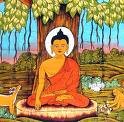
The Originar of Hatha-Yoga
Tree is the highest evolved form in plant kingdom. Man is the highest evolved species in Animal kingdom. Mushrooms are the best fungi visible on this planet. There is commonality of forms among all these highest evolved forms among different type of life-forms -Tree-like structure.Man is a cerebro-spinal being sheathed within a fleshy body. Most evolved form of cell is neuron that mediates consciousness is Tree-like structure. Surprisingly, most powerful thing that mankind achieved viz. atom bomb , produce Tree-like clouds after exploding on the surface.
Tree-like structure in Nature!
One can find out where else do Tree-like structure in nature exist. Pliny, the Younger linked the eruption of Vesuvius eruption in 79 A.D. with Italian umbrella pine. It is now an established scientific fact that the most powerfur process within earth, volcanic plumes that move inside earth is umbrella-shaped with a column & umbrella spinning about vertical axis( Tree-like). The most terrible force on the surface of the earth are the Tornados which are again Tree-like shapes with a column & an umbrella. Tree-like shape is found in other very powerful phenomena like lightening flashes, electric sparks, river delta, snowflakes, coral .
Tree-like structure is characteristics of every visceral system. Biologists trace this form in the mosses, lichens, shrubs, root system, mammalian lung bronchioles, cells of nervous system, veins & arteries forming cardio-vascular system. Wheresoever there are branching system, that invariably culminate in a Tree-like structure.
Tree & Fractal Geometry
In last fortnight, a brilliant paper was published in ‚Advances in Soft Computing“, under the title“Algorithms for Tree-like Structure Generation“ by Anna Romanowska, a neuro-anatomist et al. The team characterised Tree-like structure as that form which bifurcates but do not form any cycles. The team picked up the concepts of fractal geometry & fused with algorithms to create a Recurrent Algorithm. Self-similarity and repetition of sequence( iteration) is generated by a bifurcating cascade. The team concluded that if living system are generated recurrently, complex organic structures like roots, bronchial system in lungs emerge.
Now that an algorithm for Tree-like structure has been generated, it will be feasible in a decade to manufacture on mass scale silicon bronchial/ cardio-vascular/ neural system .
Before the advent of Fractal geometry by Benoit Mandelbrot during 1970s, the question of Tree-like structure had perturbed many a great minds. Hisao Honda of University of Kyoto published a paper on “ Description of the Form of Trees by the parameters of the Tree-like body“ in the Journal of Theoretical Biology, May, 1971. Honda concluded that Tree architecture maximizes flow access. He found stastitical similarity in living & non-living world, among branching in living system & geological & geophysical system.
- Meet Swami SIVANANDA friends, yoga, studies, at facebook <
- Meet Bhagavad Gita friends, yoga, studies at facebook <
- Meet Patanajali friends, yoga, studies at facebook <
- Meet Buddhism, friends, studies, Medicine at facebook <
- Meet Paramahansa Yogananda friends, groups, studies at fb <
- Meet Raja Yoga, Friends, Group, studies at facebook <
- Meet IYENGAR (B.K.S.), Yoga, Friends, Studies, Groups at fb<
- Meet Swami Vivekananda, Yoga, Studies, Friends, Groups at fb<
- Meet Bhagavad Gita, Yoga, Studies, Friends, Groups at fb <
- Meet Ramana Maharshi Groups, Friends, Studies, Fans at fb<
- Meet Hinduism, Groups, Friends at facebook <
- Meet Kashmir Hinduism, Studies, Friends at facebook <
- Meet Shaktism and Devi the Godess at facebook <
- Meet Saundaryalahari: Wave of Bliss by Shankaracharya at fb <
- Meet Arsha Vidya Gurukulam, Studies, Friends, Fans, at fb <
- Meet Advaita Vedanta,Groups,Studies, Vivekananda at fb <
- Meet Yogi Yogendra Nath, Studies about Goraksha at fb <
- Meet Jaya Kula and the three ways of Practicing tantra at fb <
- Meet VASTU, Friends, and Study Groups at facebook <
- Meet Jyotish, Friends, and Study Groups at facebook <
- Meet Sacred Geometry at facebook <
- READ MORE HERE:
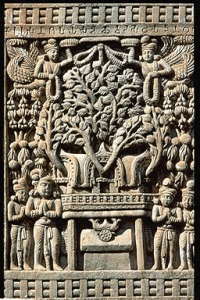
Morphic field & Morphic Resonance!
Tree-form is found in lower kingdom of Animal as well as Fungi. Jelly fishes or the polyp, these are invariably shaped like Trees. The colonies of proliferating marine organism replicate this form. It is interesting that jellyfishes which have no neurons & man with maximum neurons are essentially same in shape. Great Scottish biologist, Sir D’Arcy Thompson wrote in 1917 „On Growth and Form“, to analyse patterns & shapes in nature. His erudite tradition sd being carried by Rupert Sheldrake, a British biologist. He has done extensive work on the concept of morphic field & morphic resonance. By morphic resonance, he explains the influence of Like upon Like by which a connection among similar fields is established. He has shown in his work example of crystallization. It is very difficult to crystallize a new compound for the first time. Once it is done, a morphic field emerge. It is easier next time if someone does elsewhere in the world. There is a cumulative influence & it gets easier & easier to crystallize the compound. There is an accelerated rate of crystallization . Similarly, in learning among rats, this phenomena has been experimentally confirmed. It is difficult for a rat to pass through a maze for the first time. But, once a rat does this, another rat elsewhere does it much easily. And with each learning , there is spontaneous spread of new habits. For Sheldrake, evolutionary spread of new habit is not genetic but depends on a kind of collective memory due to morphic resonance.
This can be easily comprehended in case of human. It was very tough to manufacture clock or VCD or computer. More people are manufacturing, easier it is getting to manufacture. Watches, transistora & VCDs are now cottage industry. Who knows in future, robotics will emerge as similar kind of easily handled industry and there will be garages in every nook & corner of city to repair robots or even remodell robots by neighbourhood mechanic.
Sheldrake further proposes the concept of the „Memory of Nature“. Habits of nature depend on non-local similarity reinforcement. Through morphic resonance, the pattern of activity in self-organizing system are influenced by similar patterns in the past. He brings back the idea of Carl Jung‘ collective unconscious.
Examining Growth of Tree-Form!
I find the concept of morphic resonance appealing. That can explain this frequent recurrnce of similar pattern in nature. If we ponder over the shape of DNA & its future. The fluid around earth’s inner core creates a helical movement and generates magnetic field. The geodynamo of the earth is a self-replicating system that help explain the continuity of magnetism in earth’s core , otherwise it would have dissipated within 20,000 years. Now, the transformatory biological molecule,DNA, is helical as well as self-replicating. Within geo-physical processes, we know that Tree-like plumes are created. Now, this geophysical structure resonates throughout future evolution of biological world. For every plume within, there is a tornado on the surface. This first form of powerful process recurs at the level of the most developed categories at various levels, may it be fungi, or plants or animals or cells. And, that form recurs in even man-made powerful processes like atomic explosions.Upon visualizing this sequence, I can very well predict that the most successful biological robots or most efficient spaceship for planetary travels would have Tree-like architecture. Our Discovery spaceship is a poor materialization of that critical architecture.
Tree & bifurcation!
This Tree-like structure itself is generated by recurrent self-similarity which results due to behaviour of a dynamic system. Now, the chaos theorists have worked out very well that how in a dynamic system , a stage of crisis is set in and at the point , there are two possibilities for the system to transform. Sometimes, the system oscillates between two possibilities as found in certain chemical clocks extensively investigated by Nobal laureate Ilya Prigogine.Most of the times, the branches grow further and then bifurcate. This is iteration of self-similarity that later results into Tree-like structures.
If this kind of bifurcaing iteration is fundamental to our changing Reality which is dynamic, and there is morphic resonance, one can draw the contours of this phenomena of emergence of Tree-like structure at a higher level.
End of biological evolution!
The bifurcation, that determines DNA-replication to cell-division, has finally achieved its destiny in the biological world in the form of Human beings. We are the highest biological form and the biological evolution has now concluded. There is no further scope of biological evolution beyond us.Perfect biological bifurcating branching system has been achieved. Our lungs, our cardio-vascular system, neural system .. everything has emerged as mere consequence of cascading bifurcation. Surprisingly, we have greater number of most evolved cells viz. neurons (200 billions) which themselves replicate own form at macrolevel. The cerebro-spinal system is a magnified neuron. We are the only animal to walk on 2 legs. Penguins do perform but lack other binarities. We have two legs, two hands, two nostrils, two ears, two testicles, two mammary glands, two eyes, two kidneys, two hemispheres in brain, two atrium, two ventricles in heart, two excretory points, two lips, two jaws. Our thinking pattern is also binary. Our categories are in twos- good/bad, high/low,sacred/profasne, self/other… We donot yet understand that this duality in thought is rooted in hemispheric brain or in fractal geometry. There is no more bifurcation & branching possible in bodily architecture of human beings. This is the end-point of biological evolution. Now, mankind is on verge of developing biological robots & higher order machine consciousness therby imbuing consciousness to physical world bypassing the biological evolution. We are becoming the co-creator of the Universe as well as agent to accelerate self-consciousness of physical matter in the universe.
Trees are our cousin!
Now, the issue of Tree-like structure resonates into our collective psyche. Tree is the source of wisdom, healing, nourishment, power. Bible myth has Tree . Newton discovered moodern science sitting under an apple Tree. Buddha discovered non-theistic self-awareness sitting under a peepul Tree. In Tibetan tradition, powerful meditation requires visualizing Tree of lineage with various Gurus on different branches. These kind of visualization has transformative effect on our consciousness. In every culture, Tree occupies a significant position in rituals & mythology. We feel special feeling with Tree. Our romantic mood, our wisdom, contemplative mood, aesthetic mood.. orbit around physical & metaphoric Tree. Tree have power to transmit some kind of healing power to us. Tree are the source of healing body through fruits & herbal medicine . Tree heals our body, mind as well as soul, if any. The processes involved may be a kind of morphic reonance that vitalizes self-similar cardio-vascular, respiratory & neural system.Trees are our morphic cousins. We feel guilty & hurt when trees are cut or when those are under environmental threat.
Future?
One thing is certain. Future robots & spaceships which would be most efficient to survive would have Tree-like architecture. We would have very little to do with blooming of age of nanotechnology, biotechnology & Artificial intelligence. Successful creation of algorithm for Tree-like structure has made it more likely that artificial human organs can be manufactured at industrial level. When death will be conquered after successful download of Memories & large scale diffusion of bionics, We would have enough time to resonate with biological Trees in solitude & steer mankind towards a spiritual evolution as biological evolution from DNA-pathway has reached a dead end!
(Niraj,1.11.2009)
Shivaratri, most significant of all Festivals
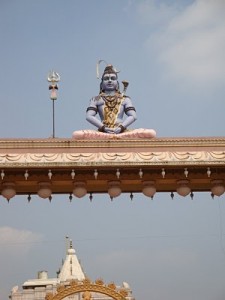
> Int. Interreligiöser Kalender <
> 12 Jyotir Lingas, Seats of Lord Siva <
> OMKARESHWAR ASHRAM, SCHOOL PROJECT <
> SRI RAMANA SEVA ASHRAM – Message No. 132.<
On 12th febrauary 2010, Maharshivaratri(lord Shiva’s Birthday) is celebrated all over the world. Maha Shivratri or Maha Sivaratri or Shivaratri or Sivaratri (Night of Shiva or „Great Night of Shiva“) is a festival celebrated every year on the 13th night/14th day in the Krishna Paksha (waning moon) of the month of Maagha (as per Shalivahana or Gujarati Vikrama) or Phalguna (as per Vikrama) in the Hindu Calendar (that is, the night before and day of the new moon). The festival is principally celebrated by offerings of Bael (Bilva) leaves to the Lord Shiva, all day fasting and an all night long vigil. Ganja is traditionally used as an offering for Lord Shiva and his followers. Read More: > HERE <
Shivaratri — The most significant of all festivals
Shivaratri is celebrated every year with a lot of religious fervour and devotion. Devotees keep fast, make offerings on Shivaling and stay awake all night (jagarari) to get the blessings of God Shiva. Unknown to most of the devotees the festival of Shivaratri holds the mystery to something most crucial namely, how God liberates the entire humanity from sorrow and suffering.
Till this mystery is solved by God himself, Shivaratri is celebrated merely as an annual ritual sans its original significance and purpose. To truly celebrate Shivaratri it is vital to know as to who Shiva is and what the word ‘Ratri’ which means night has to do with Shiva. The Supreme Soul is one and souls are many. The Supreme Soul is the Creator and Director of the eternal World Drama and souls are the actors in it. By becoming pure souls can become a great soul (mahatma), religious soul (dharamatma) and a divine or deity soul (devatmd) but they cannot become Supreme Soul i.e. paramatma. Souls are the progeny and not a part of the Supreme Soul. God Shiva is the creator of all deities even Brahma, Vishnu and Shankar.
Devotees worship them as devtaya namaha (salutations to the lords or deities). In comparison, Shiva is always worshipped as Shiva Paramatmay Namaha (Salutations to God Shiva) and Om Namaha Shivay (I salute Shiva). Lord Rama and Lord Krishna are shown as worshipping God Shiva at Rameshwar and Gopeshwar respectively.
The light form of God Shiva has been idolized as jyotirlingam (pillar of light) in 12 famous jyotirlingam Shiva temples in India viz. in Kedarnath, Somnath and Mahakaleswar etc. The light form of God is worshipped in most of the faiths in the world. Interestingly, Shivaratri does not mean Shiva’s night. The festival commemorates God’s descent on earth to end the unlimited Ratri (night) of ignorance and suffering and to usher in the golden dawn of peace, harmony and happiness.
“ Feste und Fastentage im Hinduismus „
von SWAMI SIVANANDA, 25. Kapitel – Shivaratri
siehe: > www.yoga-vidya.de <
>„1-Woche-vor-Shivaratri-Vortrag-mit-Sukadev“ <
Here Ratri connotes that critical juncture in eternal world drama cycle when unrighteousness reaches its extreme and all human efforts to redeem the situation fail. It’s a period of extreme sorrow and suffering when the vices (bad habbits) of ego, lust, anger and attachment rule human thoughts and actions.
In Hindu scriptures there is mention of the night of Brahma and also the night of the shaktis or goddesses (Navratris). The night of Brahma signifies the age of ignorance and unrighteousness in which God’s first and purest creation, Brahma and the Brahmins, are clouded by ignorance and vices. When God Shiva comes and opens their third eye of wisdom by bestowing divine intellect, they are able to forge a mental link with Him and draw His power. They thus become Shiva Shaktis who destroy ignorance and vices in the world with the help of Shiva. The Navratri (festival of nine nights) is a memorial of the end of the unlimited ratri in which devotees invoke the blessings of Shiva Shaktis and sing praise of their divine actions. It is at such a time when God intervenes to perform the divine acts of re-creating the new world order of purity, peace and prosperity and destroying the old worldorder of viciousness, violence and deprivation, as described in the Bhagavad Gita.
Just as night ends and day dawns when the sun rises, in the same way to end the night of ignorance God Shiva, the Sun of Knowledge (Gyan Surya) incarnates at the fag end of Kaliyuga, in Bharat.
This period of spiritual enlightenment is sailed Sangamyuga (Confluence Age) in which the most auspicious confluence of the Supreme Soul Shiva and human souls takes place. This is the most elevated period in human world when God incarnates in an ordinary man’s body and names him Prajapita Brahma through whom He reveals the most profound cnowledge about the Creator and His Creation. He reveals the supreme wisdom of Rajyoga which helps human beings absolve their sins and attain their original purity and perfection. That s why God Shiva is knowledgefull and patitpavan (purifier).
He is also the liberator and guide whose incarnation sets in process the destruction of the unrighteous iron-aged world – the present Kaliyuga – and consequently the liberation of ill souls from sin and suffering. God Shiva guides all souls to the land of liberation – the souls world where freed from their bondages they live in peace and silence. Thus He is also called Mahakaal (the great death or the eternal time) whose advent signals the return of everything in Creation to its original state.
This purification leads to the creation of a new pure world order Satyuga. It is the time on the world drama cycle (Srishti Chakra) which is remembered as Paradise, Heaven, Vaikunth, or Swarg where complete purity, peace and prosperity prevailed.
That is why the supreme Father of all souls is called the Creator and Shiva, which means the benefactor of all, who does good to every soul by incarnating in this world.
And the happiest news is that this golden key which opens the gates of the Golden age, Satyuga or Paradise is being given right now by Supreme Soul God Shiva himself to His spiritual children who have recognized His incognito incarnation in the human medium of Adi Dev Prajapita Brahma.
It is now that we have to awaken the soul (jagarari) and stay in the remembrance of God Shiva (up-vas means to stay close) take the oath of celibacy, sacrifice the bitterness of vices (bad habbits) on Shiva, and let the divine knowledge of Shiva flow drop by drop to all souls.
By adopting this true method of celebrating Shivaratri we should claim the greatest blessing mukthi , liberation in life, from God Shiva in this birth.
KASHMIRI OVERSEAS ASSOCIATION, INC.
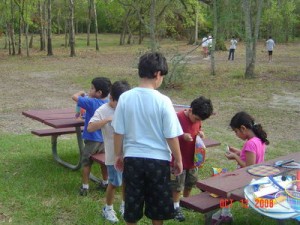
> SAVE A SMILE, Sponsor a Child <
> KASHMIR SHIVAITEN IM HIMALAYA <
> Kashmiri Overseas Association USA <
The KOA organization has its origins in the early meetings of several Kashmiri > Pandit < families in the Washington D.C. and Maryland areas. These families soon came to realize the importance of building a community structure which could include other families too in a bond for mutual preservation and growth. As more families and members joined the founding group, the organization evolved to become a national outfit with regional chapters, documented bye-laws, systems and procedures as well as a non-profit status to better seek donations and pursue community actions.
The KOA Community: > * H E R E *<
Shriya Bhat Mission Hospital and Research Center: Since then the hospital is working as a multi-disciplinary clinic. Over the years some amenities have been added like an air conditioner, refrigerator, ECG machines, glucometers, nebulizers, traction apparatus etc. A medical van has been kept at the disposal of the sick patients. The Center is open to every body irrespective of cast or creed, region or religion.
There is a work force of consultants in internal medicine, neurology, general surgery, urology, orthopedics and dermatology in regular attendance. Patients are registered for examination and treatment round the week. The mission hospital has so far rendered its services to more than 35 thousand patients. All the patients receive a free 3-4 week supply of available medicines. A mini laboratory helps with some basic investigations, again conducted free on the patients.
Sharda Peeth Rishi Model School, Udhampur, J&K: In 1990, terrorism and sectarian violence caused nearly 500,000 Kashmiri Hindus to flee the land of their ancestors, the fabled valley of Kashmir in the Indian state of Jammu and Kashmir. These victims of terrorism, refugees in their own country, left behind virtually all of their worldly possessions as they had to flee under threat to life and honor.
As in most situations, the worst sufferers of this violence were the children of this displaced people. With their parents consumed with, yet often unable to, provide the basics of living to their families these unfortunate children were often left without the only hope for a better life – a healthy education.
The Rishi Memorial School was started in the mid-1990s with contributions from a group of US-based Indian-Americans concerned for the future of these indigent children. This remarkable experiment in social self-service began with only about a dozen students and one teacher.
Save a Smile – Sponsor a Child: The refugee camps in Jammu and Kashmir house hundreds of thousands of Kashmiri Pandits displaced from their homes as a direct result of the Islamic militancy in the valley. This tragedy has resulted in children being denied the opportunities that we take for granted. Since 1995, the Kashmiri Overseas Association, USA has implemented the Sponsor-A-Child Program for the age group 5 year olds to 17 year olds. This program aims to provide educational opportunities to the children directly affected by the tragedy. While individuals worldwide have contributed to these programs more children are in need of our financial support than currently available funds can support, there are many more that deserve our assistance. Goal: To provide tuition, school supplies and living expenses to school children who are currently living in refugee camps.
Religion – The religious practices of Hindus of Kashmir (popularly known as Kashmiri Pandits) revolve around the worship of Shiva and Shakti. All other deities (gods and goddesses) of the traditional Hindu pantheon are worshipped as various manifestations of Shiva and Shakti. Shiva is the Supreme Lord of the universe and Shakti, the Universal Mother Goddess, is his eternal companion.
Region Kashmir: Poetry of Nature – Set like a jewelled crown on the map of India, Kashmir is a many-faceted diamond, changing its character with the seasons always extravagantly beautiful. Three Himalayan ranges – Karakoram, Zanskar and Pir Panjal – snow-capped, majestic, frame the landscape from northwest to northeast. They are the birthplace of great rivers which flow down into the valleys below, forested with wild orchards and lily laden lakes.
BYO, Yogaverband Österreich: www.yoga.at : > ”Eintreten in das göttliche Bewusstsein” < , Ref.: Bettina Bäumer, Ort: St. Virgil Salzburg, 23.07.10 – 25.07.10
- Programs: http://koausa.org/koa/
- Sponsor-A-Child
- Educational Assistance Program
- Rishi Memorial School
- Medical Funds
- Shriya Bhatt Mission Hospital
- Achievement Awards
- Awards & Recognitions
- Success Stories
- Projects
- Downloads
- Official Records
- Applications & Brochures
- Publications
- Newsletters
- and more…
DIE VEDEN & AYURVEDA, EIN ÜBERBLICK
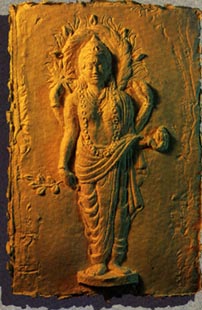
> CHARAKA SCHOOL OF AYURVEDA <
> AYURVEDA & CHARAKA SAMHITA <
>> Books from „Kenneth G. Zysk“ <<
Ayurveda (DevanÄ�garÄ�: आयुर्वेद, the ’science of life‘) is a system of traditional medicine native to India and practiced in other parts of the world as a form of alternative medicine. In Sanskrit, the word Ayurveda consists of the words Ä�yus, meaning ‚life‘, and veda, meaning ‚related to knowledge‘ or ’science‘. Evolving throughout its history, Ayurveda remains an influential system of medicine in South Asia. The earliest literature of Ayurveda appeared during the Vedic period in India. The Sushruta Samhita and the Charaka Samhita were influential works on traditional medicine during this era. Ayurvedic practitioners also identified a number of medicinal preparations and surgical procedures for curing various ailments and diseases. Ayurveda traces its origins to the Vedas—the Atharvaveda in particular—and is connected to Hindu religion.The Sushruta Samhita of Sushruta appeared during the 1st millennium BC.
Ayurveda, Rishis, die 4 VEDEN (Rgveda, Samaveda, Yajurveda, Arthavaveda) und deren Entstehung:
Der Begriff Ä�yurveda ist ein Wort aus dem Sanskrit, der altindischen Hochsprache, und heißt einfach übersetzt „Wissenschaft vom Leben“ oder „Wissen von der Lebensspanne“. Durch diese Bezeichnung versteht sich, dass im Ä�yurveda nicht nur Krankheiten behandelt werden. Als „Wissenschaft vom Leben“ hat Ä�yurveda ein zweifaches Ziel.
> Dein Ayurveda Net ….. “ Ayurveda “ <
> Meet Pentavox Herbals, Ayurveda (Biggest Ayurveda Group on fb) <
> Meet many Ayurveda Groups and Friends at facebook <
> Meet Dhanvanthari Groups and Friends at facebook <
> Meet NaturalNews.com at facebook <
NaturalNews.com is an independent news resource that covers the natural health and wellness topics that empower individuals to make positive changes in their personal health. NaturalNews offers uncensored news that allows for healthier choice.
THE ARTS OF HARISH JOHARI
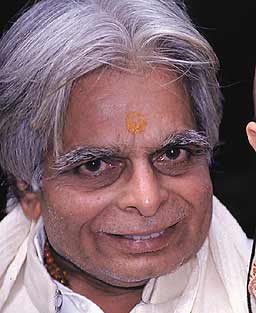
> HARISH´s AYURVEDA BOOKS & ARTS <
Harish Johari (1934-1999) was a distinguished North Indian author, Tantric scholar, poet,musician, composer, artist, and gemologist who held degrees in philosophy and literature and made it his life’s work to introduce the culture of his homeland to the West.
Breath, Mind, and Consciousness
YOGA, by the puplisher
Modern scientists are just now beginning to understand what yogis have known for centuries–that the life force animating our physical bodies is regulated by breath, and that the breath energy is controlled by the mind. The esoteric and practical science of Swar Yoga >–presented in this book for the first time in English–< teaches conscious observation and control of breathing patterns to maximize energy and vitality.
Tantric Scholar and author of Tools for Tantra, Chakras, and The Healing Power of Gemstones, HARISH JOHARI brings an in-depth knowledge of ancient Hindu sciences to this discussion of breath and the yoga of balanced living.
His is the first guidebook for Westerners to offer a comprehensive treatment of the subject, providing information from Sanskrit texts otherwise unavailable in the English Language. He explains the sensory network of the nose and its effect on the subtle channels of energy throughout the body, showing the direct link between the practice of conscious breathing and the electrochemical balance of the brain and nervous system. He also shows how the breath, alternating between left and right nostrils, is influenced by solar and lunar forces and how one can attune to these natural rhythms and universal laws for greater health and well-being.
SWARA YOGA, the ancient art of breathing
Johari’s mastery of > Swara Yoga < techniques is apparent in the broad scope of Breath, Mind and Consciousness: included are a discussion of the phases of the five elements in the breathing cycle, exercises for physical and psychic healing, the means for determining which nostril is active, and instructions for conceiving a son or a daughter.
While continuing his lifetime study and practice of tantra, HARISH JOHARI is a painter, sculptor, gemologist, and composer of Indian music.
The word SWARA in Sanskrit, means sound or musical note; it also means the continuous flow of air through one nostril. And we all know that YOGA means union. So Swara Yoga is the science which is about the realization of cosmic consciousness, through the awareness or observation, then control or manipulation of the flow of breath in the nostrils.
Swara yoga is an ancient tantric science which involves the systematic study of the breath flow through the nostrils (or swara) in relation to the prevailing phases of the moon, time of day and direction . Although we think of ‚pranayama‘ when we think of techniques associated with the breath, in Swara yoga, it is the association of the breath in relation to the activities or phases or positions of the sun, moon, planets, seasons, time of day, with the physical and mental conditions of the individual and then taking the appropriate action according to these subtle relations. For example, knowing the moon phases and checking the flow of your nostrils before you get out of bed in the morning and letting the corresponding foot be the first to touch the floor and make the first step, is a simple practice that ensures success in everything that happens for that day. The first foot to touch the ground will get the prevailing ’successful‘ flow of energy from the cosmos.
> Meet SWARA Group at facebook <
> Meet over 200 Frida Kahlo Groups and Frida Kahlo Fans (184.298) <
DIWALI – The Festival of Light
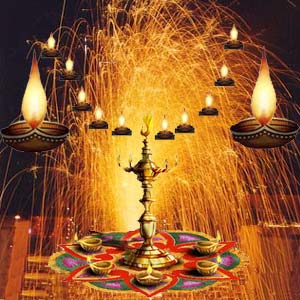
> DIWALI – Das Lichterfest in Indien <
DÄ�wali (or DÄ�pÄ�wali, often written Deepavali) (Hindi: दीपावली, दिवाली; Urdu: دیوالی; Tamil: தீபாவளி; Telugu: దీపావళి) is a significant festival in Hinduism, Sikhism, and Jainism, and an official holiday in India.[1] Adherents of these religions celebrate Diwali as the Festival of Lights. They light diyas—cotton string wicks inserted in small clay pots filled with oil—to signify victory of good over the evil within an individual.
India is a land of festivals. Diwali, the Festival of Lights, is celebrated with fervor and gaiety. The festival is celebrated by young and old, rich and poor, throughout the country to dispel darkness and light up their lives. The festival symbolizes unity in diversity as every state celebrates it in its own special way.
The celebration of the four-day festival commences on Aswayuja Bahula Chaturdasi and concludes on Kartika Shudda Vijiya. The first day of the festival Naraka Chaturdasi marks the vanquishing of the demon Naraka by Lord Krishna and his wife Satyabhama.
‚Puranas‘ have it that Naraka, son of Bhudevi, acquired immense power from a blessing given by Lord Brahma after a severe penance. He soon unleashed a reign of terror in the kingdom of Kamarupa, harassing celestial beings with his invincible might. Unable to bear the tyranny of the demon, the celestial beings pleaded with Lord Krishna to save them from his torture.
But Naraka could not be easily killed as he had a boon that he would face death only at the hands of his mother Bhudevi. So, Krishna asks his wife Satyabhama, the reincarnation of Bhudevi, to be his charioteer in the battle with Naraka.
When Krishna feigns unconsciousness after being hit by an arrow of Naraka, Satyabhama takes the bow and aims the arrow at Naraka, killing him instantly. Later Lord Krishna reminds her of the boon she had sought as Bhudevi. The slaying of Naraka by Sathyabhama could also be taken to interpret that parents should not hesitate to punish their children when they stray on to the wrong path. The message of Naraka Chaturdasi is that the good of the society should always prevail over one’s own personal bonds.
